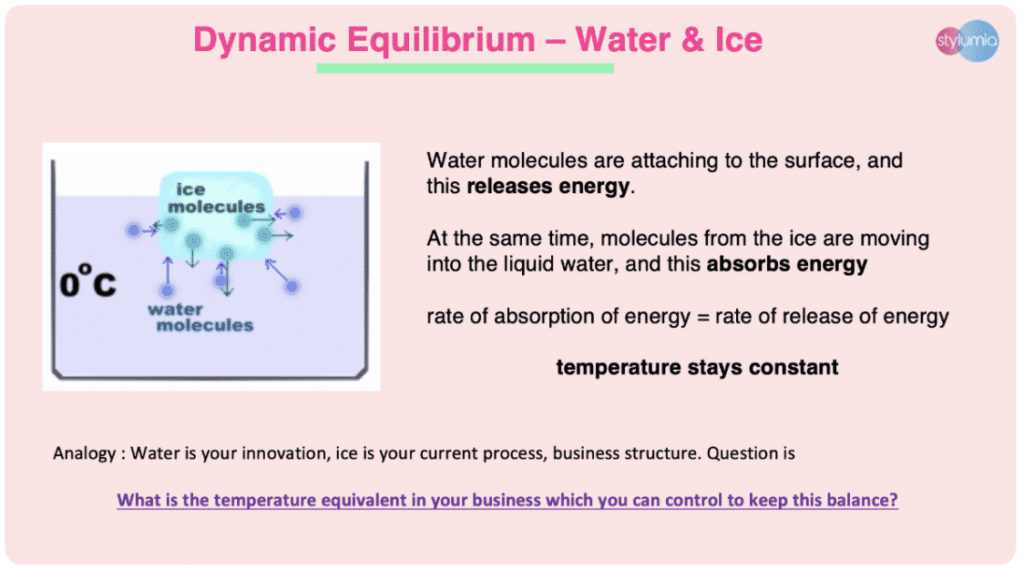A Radical Analytics Adoption Framework

Return on investment from any analytics solution comes from the application of insights. We are presenting a radical analytics adoption framework with insights from the second world war.
It is worth pondering over the following three questions,
“Why did China and India with all resources ahead of the rest of the world (western Europe in particular) in the 16th century did not lead the scientific revolution later on?”
“How did Steve Jobs create a resounding success from products which Xerox and others could not?”
“How did the United States of America win over the Germans in world war 2?”
They are all “Transformations”, not incremental improvements. How did they happen?
Here is a small experiment to get a view of such transformations happen and why.
Take a glass of water. Dip your finger and mover it around. Keep that glass of water in the freezer and try and repeat the same exercise. You will not able to move your finger around like before. What happened?
The molecules in the water and ice are exactly the same. At a particular temperature i.e. zero degrees centigrade, there is a transformation from liquid to solid. Freedom to Rigidity. Entropy to Binding in scientific terms. There is no CEO of molecules sitting there and ordering the molecules to be free or binding.
What happened, in this case, is called “phase transformation”
All phase transformations are a tug of war between two competing forces. Also, the transformation is not fixed and it can be influenced. For example, throwing salt on ice lowers the freezing temperature.
Take a drop of water and put it in a cup of water, it mingles and starts moving around, do the same with a cup of ice, the water turns to ice and becomes rigid. It is nothing to do with the molecule, but the structure of the system. If the water is equivalent of the artistic, creative and innovative side of the business and the ice is equivalent of the rigid, efficient execution side of the business, how does one have both of these phases in the organisation?

A deeper look at this analogy gives rise to some fundamental principles of how countries, organizations see crazy ideas through to fruition, effectively a phase transformation.
Another example is raw iron which is weak metal when mixed with a little bit of carbon makes it steel, and the addition of nickel and tungsten makes it usable in high-performance equipment in aerospace.
It is these small changes in structure which create these crazy transformations.
Moving to the second world war, the key personality behind the transformation was Vannevar Bush, who understood the importance of structure and created the right structure for crazy ideas to thrive in US Defense which helped them win the war in record time.
This article is inspired by a wonderful research-driven book recently published called Loonshots by Safi Bahcall (a scientist from Harvard, Stanford, Consultant, Entrepreneur, a scientific advisor to the President of the USA, and an author)
In any company or any team, you can’t be in two phases at the same time except for one condition, i.e at zero degrees. Both the ice and water exist simultaneously and in science called “dynamic equilibrium”, life at zero degrees. How can you have freedom of innovation and rigidity of execution and efficiency co-exist?

Let us now move into what it takes to realize crazy ideas to transformational worldly outcomes. The key principles for you to realize the radical analytics adoption framework are,
#1 Phase Separation: Life at Zero Degree
Vannevar Bush asked US President to give Scientific Research to him and separate the military from research. The quarantined group of scientists in a few weeks were able to turn around path-breaking research (crazy ideas) to discover microwave radar.

#2 Be a Gardener, not the Moses
Most of the innovation labs fail in spite of separating artists and soldiers. What they miss is the transfer. When the scientists developed the radar and military could not conveniently use it. It was going to and fro. Bush intervened and made scientists sit with soldiers as they were flying to understand the practical difficulty it started to work and when they changed the interface taking real feedbacks into account.
In many organisations when new ideas come up and it is in the lab, and the mainstream is motivated by efficiency, it does not work as new ideas do not immediately get converted to business outcomes. This needs a transfer of feedback from both the phases (artists and soldiers) and an orchestrator. Vannevar Bush was that orchestrator.

#3 Love your Artists and Soldiers Equally – Gain Critical Mass
When Steve Jobs came back to Apple, he brought in a Soldier Tim Cook and the Artist Jony Ive. Steve was loving them both equally. When the time came, he made Tim the second line to CEO considering what was important to Apple. This balance is very critical to nurturing your moonshots.
Also after the initial feedback cycle, start to build a critical mass for the new idea before making it mainstream. Hence the choice of where to pilot is also equally critical. Many leaders try new ideas where they have a low risk of experimentation which may not be the best idea.
While these principles are simple and clear, they fall apart when an idea fails on its first go. It has been proven that there is a magic number three when ideas start to work. Whenever you try any new project, rather than dismissing when an expected result does not come, get deep into analysing “Why it failed?” As many of the ideas fail for the wrong reasons. It is called “False failures”. Great investors know what to look for when there is a failure.
When Facebook started scouting for money, many investors rejected it as similar startups did not make it. A set of smart investors went and analysed why those start-ups failed, and figured out it was a false failure, they gained confidence and invested in FB later. Rest is History.
A similar case happened with the discovery of medicine for high cholesterol in the blood. Initial findings did not work on the rat. Later it was found the medicine showed improvement in humans, and the rat as the testing medium was a wrong choice rather it should have been chicken.
With innovation being the key to staying alive and differentiated, each one of you may be going through different phases of the journey. Hope this edit gave you a framework to look at if you are exploiting the structured paradigm fully before concluding on the strength of crazy ideas you have and your experiments.
The construct works well with our client ecosystem. On analysis we found when these principles are followed, clients see maximum potential delivered through the Stylumia partnership. You can read our other article on analytics as your competitive advantage here.
Wishing you all an exponential ROI of all your analytics initiatives. In fact, this analytics adoption framework is true of any adoption of innovation.



